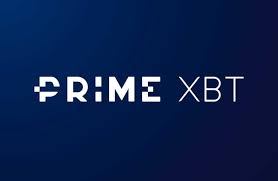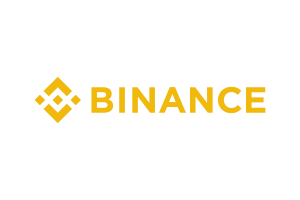This day in history: January 6, 2009 – The anarchists and mavericks rose up, but now they are gone for good
Mavericks and anarchists with bow ties and flamboyant, anti-corporate and anti-government aspirations have given way to the briefcase and grey suit of the exact institutions that they sought to slip the finger to. How 7 years can make a new innovation go completely full circle

Central banks which issue sovereign currency, according to government regulations, adhering to international exchange and valuation rulings, with publicly elected officials presiding over their conduct, whose names and responsibilities are as absolutely visible as the coin and note circulation for which they are responsible.
How tedious….
…or so thought Australian entrepreneur Craig Wright who, under the pseudonym Satoshi Nakamoto, launched an all new approach to payment methodology, with a new currency that had no borders, no central issuer, no governing authority, no differences between its value or supply that depended on location, no backing from any institution or government, no transparency and no physical appearance.
On this day in 2009, Satoshi Nakamoto, or Craig Wright, put the invisible, virtual and completely homeless cat among the grey suit wearing, institutionalized pigeons.
Immediately, this shock to the financial system as well as the technology development environment which had always gone hand in hand with financial institutions, was tremendous.
Traditionally, banks and large financial services companies always ensured that their infrastructure was developed, supported and operated in-house by their own systems and infrastructure architects, or via long term outsourcing contracts to professional services consultancies such as Steria, BT Radianz, HP, PriceWaterhouseCoopers, Accenture and Fujitsu-Siemens.
Not a box was ever left unchecked, and there had always been a C-level sanctioned directive for everything ever conducted. I spent 18 years as an external consultant working on infrastructure development projects for trading desks with my own consultancy business, and can vouch that every action required a business justification, and no deviation from the plans or timescales were ever permitted, all of which was written into tender and contract.
Then along came Bitcoin.
Its nature completely embraced by the mavericks and anarchists wishing to circumvent the establishment.
Various flamboyant and outspoken Bitcoin proponents rose up and conducted several outspoken public diatribes during the early years of the digital currency’s existence.
At that point, it was considered a two-finger salute to the governments of the world, the established and developed financial markets economy and the world’s banks, as well as the traditional, regulated and controlled international business environment.
Crypto-anarchy became a rapidly increasing phenomenon.
Untraceable, privately issued electronic money and anonymous internet banking began to exist in these networks. Digital Monetary Trust and Yodelbank were examples of two such anonymous banks that were later put offline by their creators. eCache is a bank currently operating in the Tor network, and Pecunix is an anonymous (submitting personal information when opening an account is optional) gold bank operating on the Internet.
Ukash is another example, that being an e-money network. Cash in amounts up to £500/€750 can be swapped for a 19-digit Ukash voucher in payment terminals and retail outlets.
Bitcoin is a currency generated and secured by peer-to-peer networked devices that maintain a communal record of all transactions within the system that can be used in a crypto-anarchic context. The idea behind bitcoin can be traced to Timothy C. May’s 1988 publication The Crypto Anarchist Manifesto.
Silk Road was an anonymous market operated using the Tor network. Similarly, Assassination Market is a Tor-based market operated by a self-described crypto-anarchist going by the pseudonym Kuwabatake Sanjuro.
MtGox, the very first Bitcoin exchange was founded.
Silk Road was seized by the US government, its owners and founders arrested for their part in money laundering and illicit trade. Its Bitcoins were confiscated and auctioned by the US Marshal Office.
MtGox collapsed, with reports at the time citing e-wallet security failings that had caused the nominal price of a bitcoin to fraudulently drop to one cent on the Mt. Gox exchange, after a hacker allegedly used credentials from a Mt. Gox auditor’s compromised computer illegally to transfer a large number of bitcoins to himself. He used the exchange’s software to sell them all nominally, creating a massive “ask” order at any price. Within minutes the price corrected to its correct user-traded value. Accounts with the equivalent of more than $8,750,000 were affected.
Two years later, in February 2014, Mt. Gox filed for bankruptcy protection in Tokyo, reporting that it had liabilities of about 6.5 billion yen ($64 million at the time), and 3.84 billion yen in assets.
The company said they had lost almost 750,000 of its customers’ bitcoins, and around 100,000 of its own bitcoins, totaling around 7% of all bitcoins, and worth around $473 million near the time of the filing.
Mt. Gox released a statement saying “The company believes there is a high possibility that the bitcoins were stolen,”[6] blaming hackers,[30] thus beginning a search for the missing money. The Chief Executive of Mt. Gox, Mark Karpelès, said technical issues opened up the way for fraudulent withdrawals.
On 9 March 2014, Mt. Gox filed for bankruptcy protection in the US, to temporarily halt U.S. legal action by traders who alleged the operation was a fraud.
On 20 March 2014, Mt. Gox reported on its website that it found some bitcoins — worth around $116 million — in an old digital wallet from 2011. That brings the total number of bitcoins the firm lost down to 650,000 from 850,000.
On April 14, Mt. Gox lawyers said that Mark Karpeles would not appear for a deposition in a Dallas court, or heed a subpoena by FinCEN. On 16 April 2014, Mt. Gox gave up its plan to rebuild under bankruptcy protection, and asked a Tokyo court to allow it to be liquidated.
Bitcoin ATMs were beginning to be developed, at which point, national regulators began to consider the viability of offering a regulated environment for entities to provide ATMs, exchanges at which Bitcoin could be traded for sovereign currency, and certain aspects of the technology that develops Bitcoin.
Switzerland, of all places, began providing approval via its banking regulator, FINMA, a notoriously protective and traditional entity, to allow a network of Bitcoin ATMs to be installed across Switzerland.
New York’s highly renowned Superintendent of Financial Services Benjamin Lawsky set in place a series of regulatory stipulations for Bitcoin development, which caused many mainstream industry professionals in the FinTech sector to consider New York to have a future as a Bitcoin center.
Here we are, in 2017, however, and absolutely nothing of the sort has prevailed.
Bitcoin itself has left a trail of anarchy, destruction and lack of credibility in its wake, and would have likely shuffled off its own very immortal coil by now if it were not for one particular intrinsic component: blockchain.

Ironically, the very institutions that anarchists such as internet entrepreneur, economics writer and anarcho-capitalist Jeff Tucker, SEC bete noire Erik Voorhees of BitInstant and Coinapult fame, and Mauro Betschart of BTCGlobal sought via their outspoken methodology sought to circumvent have now gone full circle and are interested in the virtual currency’s technology to the tune of hundreds of million dollar investments in its development in order to automate banking operations.
Meanwhile the mavericks and anarchists are now nowhere to be seen and their cause has faded.
The astronomical value of the Bitcoin against any other currency worldwide is still well and truly overshadowing everything else, rallying this week to $1150 for just one Bitcoin, however any notion of it showing despotic capital control-obsessed despots in parts of South America or the Far East has amounted to absolutely nothing, whilst JP Morgan, Merrill Lynch, Goldman Sachs, PriceWaterhouseCoopers and a series of vast venture capital funds invest continually in blockchain development.
Goodbye the rabble-rousing West Coast university speeches aimed at impressionable hipsters with a ’cause’, hello the institutional grey suit.
Most of the interest by individuals in creating the coins themselves has also subsided.
Mining, as the self-conducted creation of Bitcoin is known, is a record-keeping service in which miners keep the blockchain consistent, complete, and unalterable by repeatedly verifying and collecting newly broadcast transactions into a new group of transactions called a block.
Each block contains a cryptographic hash of the previous block, using the SHA-256 hashing algorithm, which is denoted by the :ch. 7 character, which links it to the previous block, thus giving the blockchain its name.
This is inseparable from Bitcoin, hence Bitcoin development is huge now, not because of the coin, but because of the distributed ledger automation capability of blockchain which institutions can use for specific operational purposes.
Mining has declined because as time goes on, Bitcoin by its very design was invented to have limited supply, hence the more mining that occurs, the more difficult it becomes to mine new Bitcoins. We asked a very widely known FinTech CEO recently whether even with a large rig dedicated to that purpose, it is worth it. The answer was “It is not worth the electricity cost.”
In 2013, Mark Gimein estimated electricity use to be about 40.9 megawatts (982 megawatt-hours a day). In 2014, Hass McCook estimated 80.7 megawatts (80,666 kW). As of 2015, The Economist estimated that even if all miners used modern facilities, the combined electricity consumption would be 166.7 megawatts (1.46 terawatt-hours per year).
Out of all of that, a miner may manage to extract two or three Bitcoins at the most.
Thus, the Google Campus late night lectures on Bitcoin, e-wallets and ATM connectivity that took place in the early days of Bitcoin have almost all gone, as have the entities operated by them, and the plate glass corporations have waded in, and are continuing to do so.









